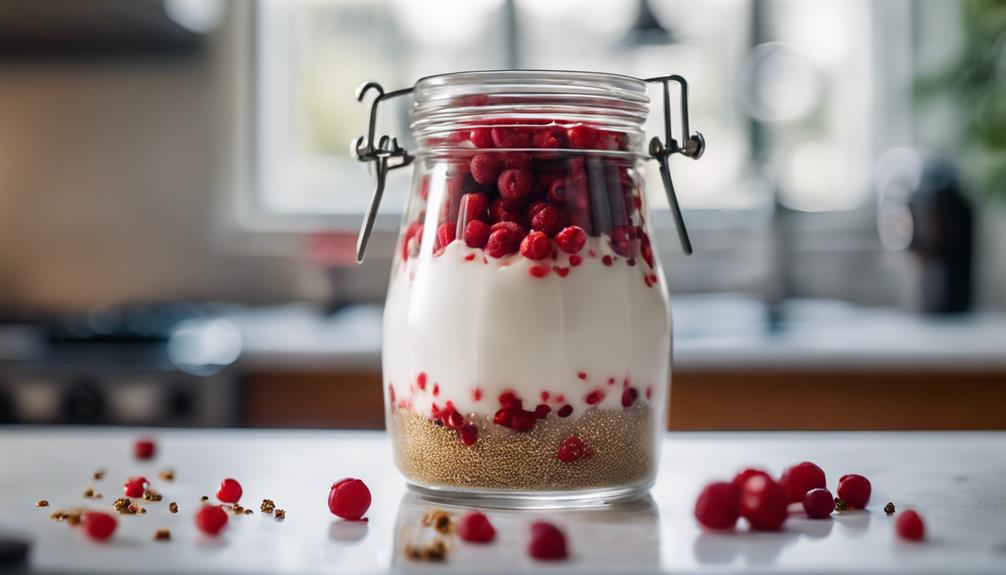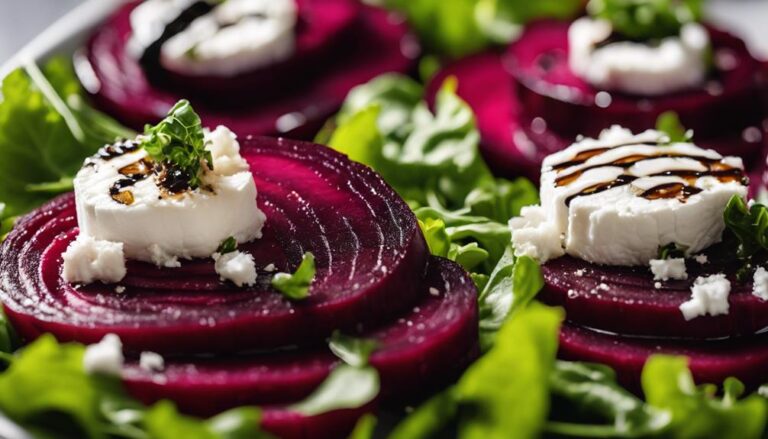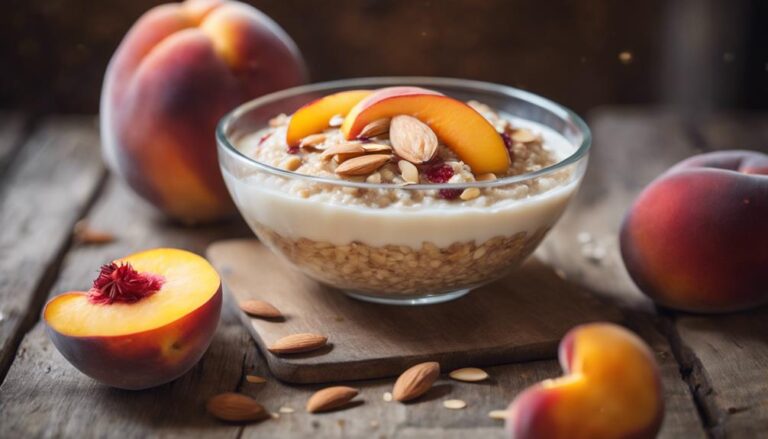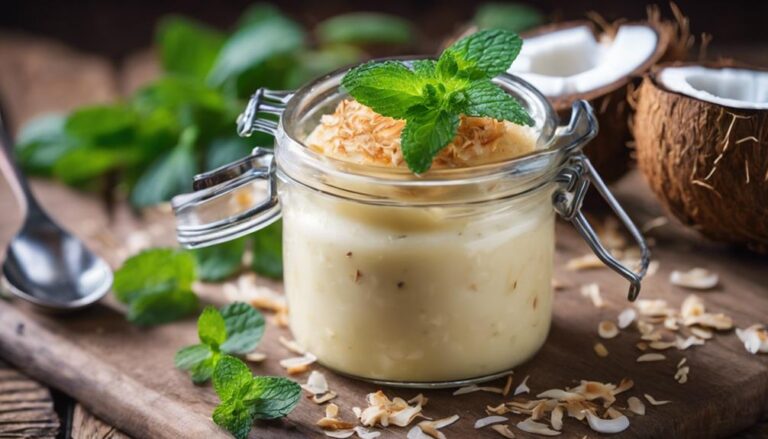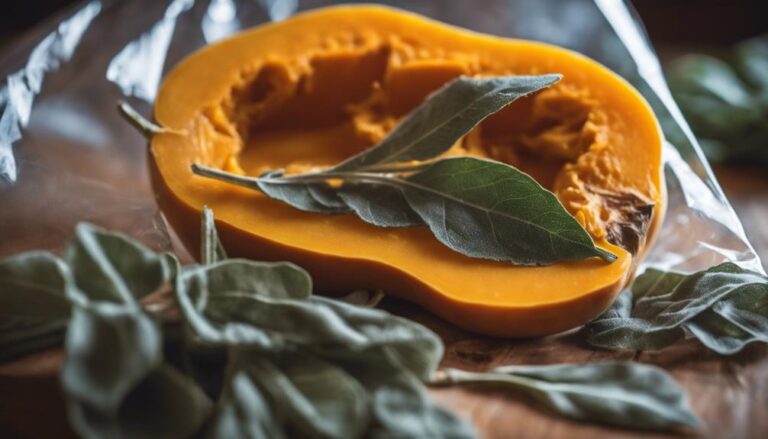Sous Vide Greek Yogurt With Berries and Flaxseed
Achieve a velvety texture in Sous Vide Greek Yogurt with Berries and Flaxseed. Use precise temperature control for ideal thickness. Seal bags to retain nutrients and moisture. Opt for high-quality Greek honey and nuts for enhanced flavors. Experiment with various yogurt parfait options. Strain yogurt effectively with proper equipment. Enjoy a nutritious and delicious breakfast or snack.
What You Will Learn Here
- Sous vide method ensures precise temperature control for perfect yogurt texture
- Incorporate fresh berries for a burst of flavor and antioxidants
- Flaxseed adds a nutritional boost with omega-3 fatty acids
- Balance sweetness and crunch with honey and nuts
- Create a wholesome and delicious parfait with vibrant colors and textures
Yogurt-making in Ancient Greece

Ancient Greeks played a significant role in the origins of Greek yogurt, a dairy product with a rich history. They employed traditional methods to create yogurt, relying on natural fermentation processes.
Historical texts suggest that yogurt was consumed widely in Ancient Greece for its perceived health benefits and delicious taste.
Greek Yogurt Origins
Yogurt-making in the historical Greek period exemplified a meticulous process of fermenting milk to produce a creamy and tangy dairy product. Greek yogurt production dates back to ancient times, where it was highly regarded for its health benefits. The Greeks believed that yogurt aided in digestion and promoted gut health due to its probiotic properties.
The process involved heating milk and allowing specific live cultures to ferment it, resulting in a thick and creamy yogurt with a slightly tangy taste. This traditional method of yogurt-making in Ancient Greece laid the foundation for the Greek yogurt we enjoy today, known for its rich texture and high protein content. The historical significance of Greek yogurt continues to be appreciated for its nutritional value and delicious taste.
Traditional Yogurt Making
Exploring the historical methods of dairy fermentation in Greece reveals a meticulous process that contributed to the creation of the renowned Greek yogurt we enjoy today. Traditional methods of yogurt-making in Ancient Greece involved heating milk and allowing it to cool to a specific temperature to promote the growth of beneficial bacteria.
This fermentation process was fundamental in transforming milk into a thick, creamy yogurt with a tangy flavor profile. The Greeks, known for their attention to detail, would often use clay pots to ferment the milk, allowing for ideal temperature control. By following these precise steps in the fermentation process, they were able to produce high-quality yogurt that wasn't only delicious but also packed with probiotics and nutrients essential for maintaining good health.
Historical Yogurt Consumption
In early Greek culinary practices, the preparation of yogurt involved a meticulous process of heating and cooling milk to cultivate beneficial bacteria. Yogurt consumption evolution in Ancient Greece reveals a tradition deeply rooted in the belief of its health benefits.
Historical records suggest that ancient Greeks consumed yogurt not only for its taste but also for its reputed medicinal properties. The nutritional benefits of yogurt were highly regarded, with its probiotic content aiding in digestion and promoting overall gut health. Yogurt was considered a valuable source of protein, calcium, and essential vitamins.
The evolution of yogurt consumption in Ancient Greece demonstrates a sophisticated understanding of food preservation and the promotion of well-being through dietary choices.
Greek Honey and Nuts
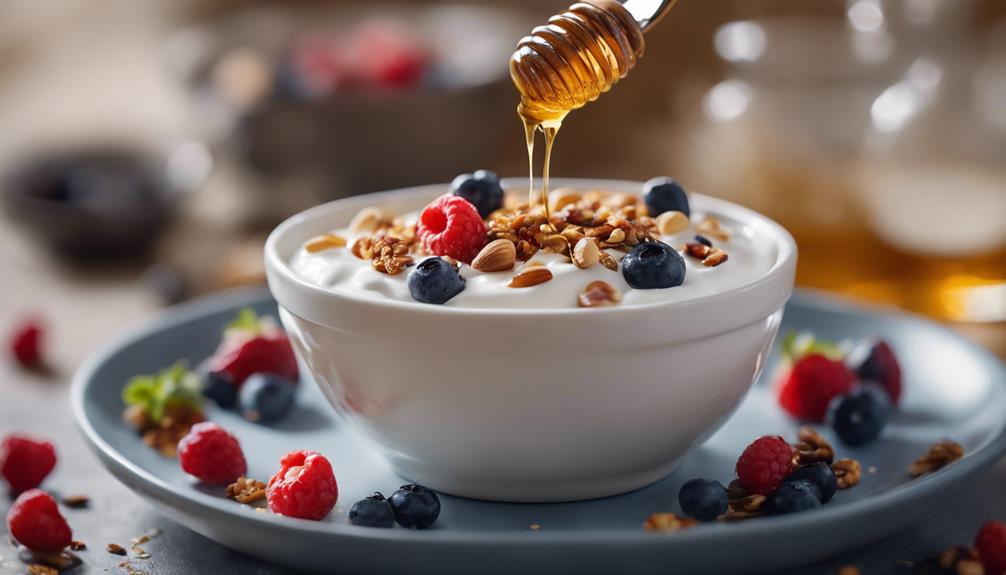
To enhance the flavor profile of your Sous Vide Greek Yogurt, consider incorporating Greek honey and nuts for a delightful blend of sweetness and crunch. Greek culinary traditions often feature the combination of yogurt with honey and nuts, offering a balance of textures and flavors that elevate the dish.
Here are some suggestions for incorporating Greek honey and nuts into your yogurt:
- Greek Honey: Opt for high-quality Greek honey varieties such as thyme or wildflower honey to add a distinct floral sweetness to your yogurt.
- Walnuts: Crushed walnuts provide a satisfying crunch and nutty flavor that pairs exceptionally well with the creamy texture of Greek yogurt.
- Almonds: Sliced almonds offer a delicate crunch and a slightly sweet taste, complementing the tanginess of the yogurt for a well-rounded sensory experience.
Yogurt Parfait Variations
Explore the versatility of yogurt parfaits with our three distinctive variations:
Creamy Greek Yogurt Parfait, Berry Yogurt Smoothie Bowl, and Flaxseed-Infused Yogurt Bowl. Each option offers a unique blend of flavors and textures, catering to different preferences and dietary needs.
Experimenting with these yogurt parfait variations can elevate your breakfast or snack time routine, providing a delightful and nutritious experience.
Creamy Greek Yogurt Parfait
Consider incorporating layers of crunchy granola for added texture and contrast in your creamy Greek yogurt parfait. When preparing a parfait, achieving a balance of flavors and textures is crucial to create a delightful experience.
Here are some suggestions to enhance your creamy Greek yogurt parfait:
- Flavor Combinations: Experiment with different fruits, nuts, or honey to add layers of flavor complexity.
- Texture Preferences: Vary the textures by adding ingredients like chia seeds, shredded coconut, or chopped nuts.
- Nutritional Benefits: Opt for fresh fruits rich in antioxidants or add a sprinkle of superfoods like flaxseeds for an extra nutritional boost.
Creating visually appealing layers in a clear glass can elevate the presentation of your parfait, making it a feast for the eyes as well as the taste buds.
Berry Yogurt Smoothie Bowl
For an invigorating twist on your traditional yogurt parfait, elevate your breakfast experience with a nourishing Berry Yogurt Smoothie Bowl.
- Smoothie variations: Experiment with different fruit combinations such as mixed berries, bananas, and mangoes to create diverse flavors in your smoothie bowl.
- Yogurt toppings: Add a rejuvenating texture by sprinkling granola, nuts, or chia seeds on top of your smoothie bowl for added taste and nutrition.
- Health benefits, breakfast options: Incorporate superfoods like spinach or kale into your smoothie for an extra boost of vitamins and minerals, making it a wholesome breakfast choice that will keep you energized throughout the morning.
Enjoy a revitalizing and nutrient-packed start to your day with this delicious Berry Yogurt Smoothie Bowl!
Flaxseed-Infused Yogurt Bowl
To enhance your yogurt parfait experience, infuse your bowl with the nutritious goodness of flaxseed for added texture and health benefits. Incorporating flaxseed into your yogurt bowl not only provides a delightful crunch but also boosts the nutritional value of your meal. Flaxseed benefits include being rich in omega-3 fatty acids, fiber, and antioxidants, which can aid in digestion and promote heart health. Additionally, the addition of flaxseed can help improve the overall consistency of your yogurt, creating a more satisfying and filling treat.
Consider these tips for a delicious flaxseed-infused yogurt bowl:
- Sprinkle ground flaxseed over your yogurt for a nutty flavor and added crunch.
- Mix whole flaxseeds into your yogurt for a chewier texture.
- Stir in a tablespoon of flaxseed oil for a smoother consistency.
Yogurt Straining Techniques
When straining yogurt, you'll focus on techniques like:
- Straining for thickening
- Controlling time and temperature
- Using the right equipment and materials
Straining for Thickening
Consider employing a fine mesh strainer or a layer of cheesecloth to enhance the thickening process of your yogurt. Straining benefits the yogurt by removing excess whey, resulting in a thicker consistency. When you strain the yogurt, the whey drips out, leaving behind a denser, creamier product.
The finer the mesh of your strainer or the tightly woven cheesecloth, the more whey will be extracted, aiding in the thickening of the yogurt. This step is essential for Greek yogurt, known for its rich and velvety texture. By allowing the whey to drain out gradually, you're left with a yogurt that isn't only thicker but also more flavorful and satisfying.
Time and Temperature
For optimal results in yogurt straining techniques, maintaining a consistent temperature and duration throughout the process is essential to achieve the desired thickness and texture.
Temperature control plays a key role when straining yogurt. Whether using a traditional stovetop method or a modern sous vide cooking technique, ensuring the yogurt remains at a constant temperature is vital for achieving the desired outcomes. The chosen cooking method will determine the temperature regulation required.
Sous vide cooking offers precise temperature control, which is perfect for keeping the yogurt at the ideal temperature for straining. This regulation helps prevent overheating, which could impact the yogurt's texture. By adhering to the recommended time and temperature instructions for straining, you can effortlessly create creamy and thick Greek yogurt.
Equipment and Materials
To effectively strain yogurt, prepare the necessary equipment and materials in advance. You'll need a yogurt container for holding the yogurt during straining and a water bath for regulating the temperature during the process. The yogurt container should be large enough to accommodate the quantity of yogurt you're straining, and it should have a lid to maintain cleanliness.
When using a water bath, make sure the temperature is consistent to encourage the straining process. Place the yogurt container in the water bath, ensuring the water level is stable and doesn't seep into the yogurt. By having these essential tools ready, you can efficiently strain your yogurt to achieve the desired consistency and quality.
Final Thoughts
In conclusion, the overall process of preparing Sous Vide Greek Yogurt with Berries and Flaxseed emphasizes the importance of precision in temperature control and timing for achieving the desired consistency and flavor profile. Reflections on this method reveal that the controlled environment of sous vide cooking guarantees that the yogurt retains its nutrients and probiotic benefits, making it a healthier option compared to store-bought alternatives. The slow cooking process also contributes to a velvety smooth texture that's difficult to achieve through traditional methods.
Benefits of using the sous vide technique include the convenience of set-it-and-forget-it cooking, allowing you to multitask without the risk of burning or overcooking your yogurt. The sealed bags prevent evaporation, preserving the moisture content and preventing a skin from forming on the surface. However, improvements could be made by experimenting with different fruit combinations or incorporating additional toppings for added texture and flavor.
Frequently Asked Questions
How Can I Incorporate Greek Yogurt Into Savory Dishes?
When exploring savory recipes with Greek yogurt, consider its versatility in enhancing flavor profiles. Incorporate Greek yogurt in dips, marinades, or dressings for a tangy twist.
Its creamy texture can balance out spicy or tangy components in dishes like tzatziki sauce or curry. Experiment with herbs and spices to create unique flavor combinations that complement your savory creations.
Greek yogurt can elevate the taste and texture of various dishes, adding a rejuvenating element.
Can I Use Frozen Berries for This Recipe?
Yes, you can use frozen berries for this recipe. When considering fresh vs. frozen berries, note that frozen berries can be just as nutritious as fresh ones. The freezing process helps lock in essential nutrients.
Hence, using frozen berries won't greatly impact the nutritional value of your dish. Feel confident in incorporating frozen berries into your Sous Vide Greek Yogurt With Berries and Flaxseed for a convenient and healthy choice.
What Are the Health Benefits of Flaxseed in Yogurt?
Flaxseed benefits are numerous when added to yogurt. This tiny seed is a great source of omega-3 fatty acids, fiber, and lignans, which have antioxidant properties.
When combined with the nutritional value of yogurt, including protein, calcium, and probiotics, flaxseed enhances the overall health benefits. Together, they create a powerhouse of nutrients that can support heart health, digestion, and overall well-being, making your yogurt even more nutritious and beneficial.
Is It Possible to Make Dairy-Free Greek Yogurt?
If you're looking to make dairy-free Greek yogurt, consider using plant-based alternatives like coconut, almond, or soy milk as your base. These options can provide similar creamy textures and tangy flavors.
While traditional Greek yogurt is made from dairy, plant-based versions can still offer probiotic benefits when using cultures specifically designed for non-dairy yogurt production.
Experiment with different milk alternatives to find the one that suits your taste preferences and dietary needs.
Can I Substitute Regular Honey for Greek Honey in the Recipe?
Yes, you can substitute regular honey for Greek honey in the recipe. While Greek honey might offer a unique floral flavor, regular honey can work just as well.
The substitution may slightly alter the taste, but it should still complement the yogurt and berries.
Feel free to experiment with different types of honey to create various flavor variations in your dish.
Conclusion
To sum up, sous vide Greek yogurt with berries and flaxseed is a delicious and nutritious treat that can be easily made at home.
By utilizing traditional yogurt-making techniques and incorporating different ingredients like honey, nuts, and berries, you can create a variety of flavorful yogurt parfait variations.
Straining the yogurt can also enhance its texture and taste.
Experimenting with different combinations and techniques can result in a truly satisfying culinary experience.
